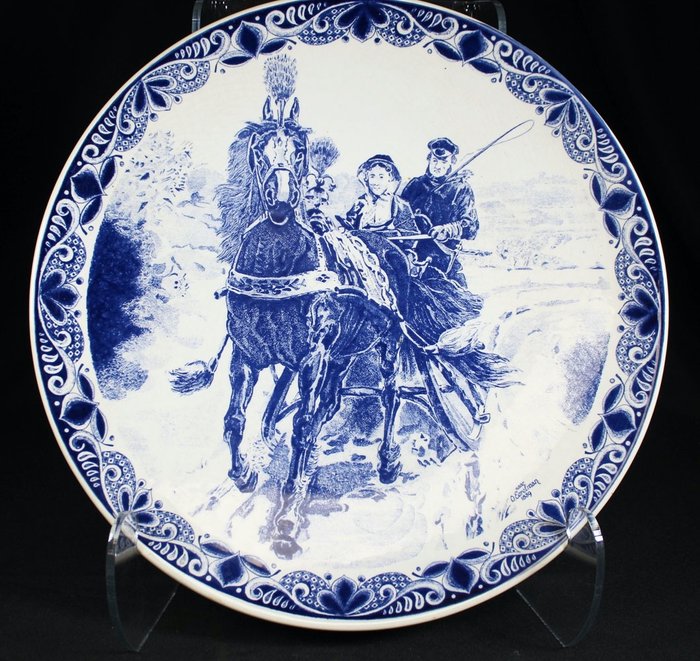
Clemens Briels - Tappo di sughero per bottiglie - Ceramica
N. 33793445

N. 33793445

Large Blue Delft Horse & Carriage Decor Plate
A stunning hand-painted plate measuring 39cm diameter and weighing over 2 kilos.
Will enhance any horse themed collection
Delft Blue is a type of pottery which is made in the Dutch city of, you guessed it, Delft. The production of Delft Blue started in the 17th century and it is still being made today. In the early days of Delft Blue, potters began by making the traditional Delftware using clay. This clay was then baked before a tin glaze was added. Figures where then painted onto the glazed clay using crushed oxides, and then it was fired again. It was in the second baking stage that the paintings got their Delft Blue color.
When potters in Antwerp fled from the Spanish Inquisition and settled in Delft, the manufacturing of Delft Blue pottery became more refined. The choice of clay changed and it was dipped in a white glaze. The Delft Blue style was used to make ornaments, plates, and also tiles.
Delft Blue was hugely popular between 1600 and 1800 AD, and it got its inspiration from Chinese porcelain. During the 17th century, with the Dutch Golden Age in full swing, all things Eastern were sought after and the Dutch East India Company (VOC) began bringing back porcelain items.
One of the other things the VOC brought back was tea. But the Dutch did not have the right vessels to drink it out of, so potters in Delft started making teapots and cups. Following their imitation of the Chinese, they painted their pieces in a "Chinese" style.
Chinese porcelain was highly revered; however, only the richest in society could afford it. This is why the Dutch started making Delft Blue pieces with clay and a tin glaze, which they later adapted.
During the Delft Blue craze, the pottery style took on a form of its own and potters started painting typical Dutch scenes and objects, such as windmills and tulips, onto the earthenware pieces. At the peak of Delft Blue, there were 33 factories manufacturing Delftware in Delft alone.
Come fare acquisti su Catawiki
1. Scopri oggetti speciali
2. Fai l’offerta più alta
3. Paga in tutta sicurezza